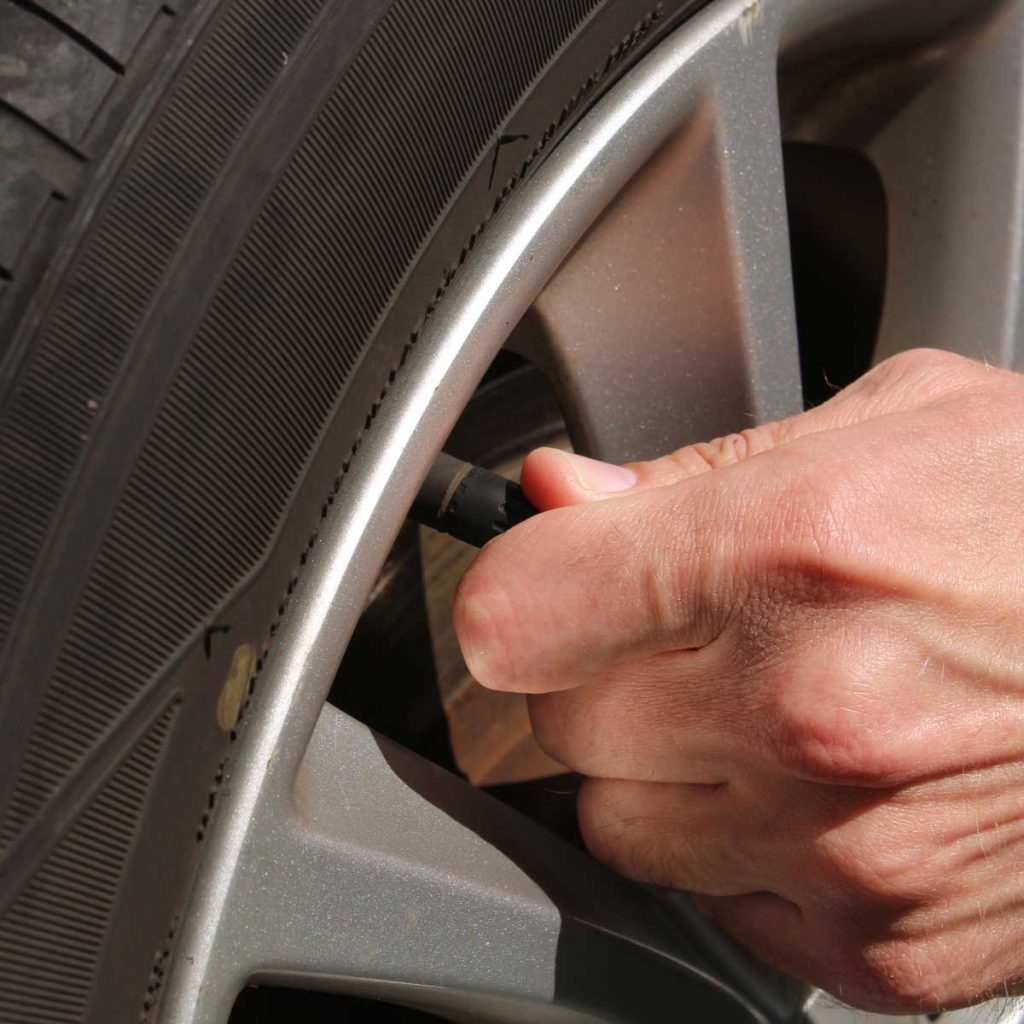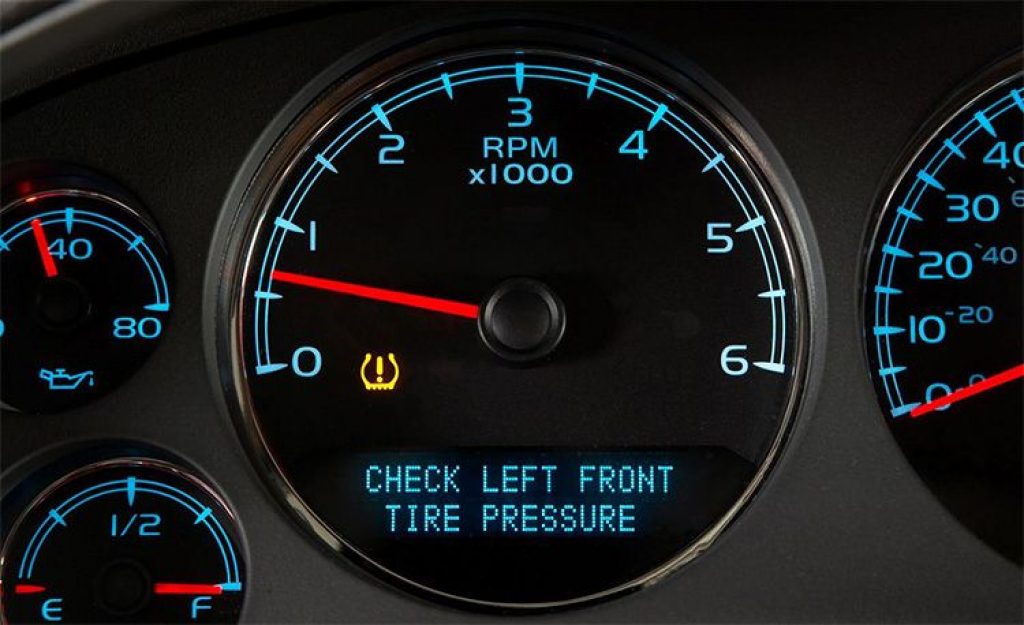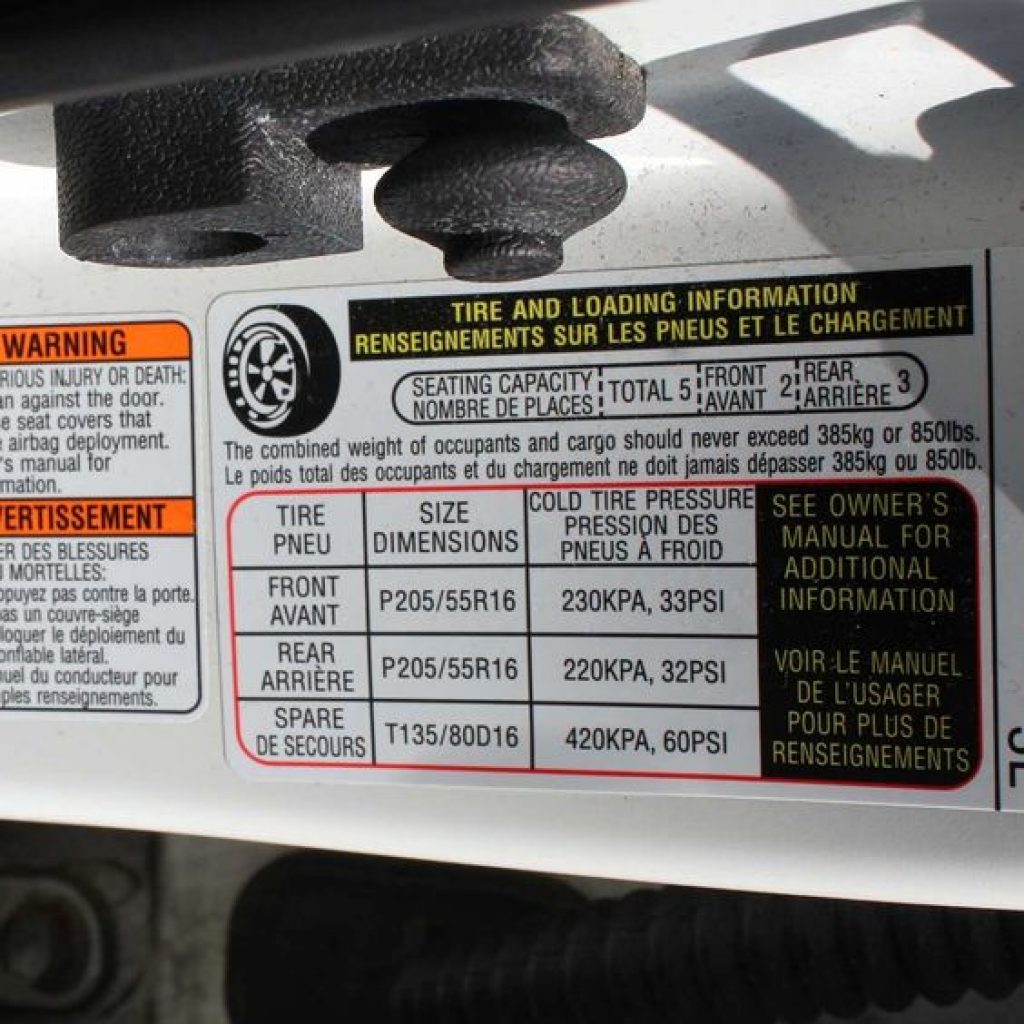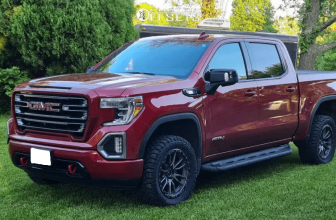Keeping tires in good shape is vital to driver’s road safety. A regular tire pressure check gives you confidence that your tires are fine or indicates that you should address the issue as soon as possible.
A tire pressure gauge makes it easy to detect if one or all of your vehicle tires require inflation.
But what if you have to find out tire pressure but don’t have a car tire pressure gauge?
Don`t worry. We will dive deep into all the possible solutions to check car tire pressure without a gauge. Keep reading our article to find out the option that suits you the best!
What are the ways of checking car tire pressure without a gauge?
Below are several options that will help you check your car tire pressure if there is no gauge with you.
Hand or foot check
This type of tire check is the most widespread, especially if you don’t have a tire pressure gauge. Find out if your tire needs some air press on the tire with your hand or foot.
If the tire feels squishy when pressing it, you should pump it. If the tire is solid – it has enough pressure and is suitable for driving on it.
Eyeballing check
Also, you can check your tire pressure by observing the wheels and looking for any inconsistencies. The vehicle must be standing on a flat area to apply this approach.
Check the tires for any protuberance signs. It is recommended to inflate the tires before getting behind the wheel if there is a bulge larger than a centimeter on both sides.
Loading weight check
To determine if the pressure is ok, you can put some cargo in your vehicle. Now inspect every wheel of your car to see if one of the tires differs from the others.
If the tire lacks pressure, you`ll spot it by the bulges on it. If so, you must inflate your tire to a proper air level.
Mud or water check
Find a flat stretch surface with mud or puddles to run a check.
Drive through mud or a puddle and inspect the traces the wheels leave. If they are different, then most likely, one of your tires needs air pumping.
Driving check
You can feel some low-pressure tire moments while riding your vehicle.
Here are signs that your tires are lacking pressure:
- Steering noise, especially while cornering
- Bumpy and harsh ride
- Different than usual steering response
If you`ve spotted one of the mentioned problems, manage to address the issue as soon as possible. If needed, add some air to the tires.
Alternative Wayout To Check The Tire Pressure Without A Gauge
If you don’t have the tire pressure gauge with you, you can check it with an air pump that has a gauge (either the one you have in your trunk or at the gas station).
Carefully connect the nozzle to the tire valve and read the measurements. For a more precise result, check all your vehicle tires and compare the results.
What Gives You Regular Tire Pressure Check?
Saves from accidents
Tires with low pressure tend to lose tread depth faster than expected. When the tire is underinflated, the contact patch with the surfaces worsens, resulting in less responsible car behavior, especially while steering or passing corners.
Another case is when the tire is overinflated. When there is too much air inside the tire while moving, especially at high speeds, the tire heats faster, which can lead to a tire blowout at an unexpected moment.
Improves your fuel efficiency
If your tires lack pressure, it may soon result in increased fuel consumption. Your vehicle needs more effort from the engine and torque to rotate underinflated tires, which can lead to fewer miles per gallon.
As a result, you buy more gas which leads to additional expenses.
Prevents an uneven tire wear
If one tire is deflated more than all the others, then the entire bulk of the car’s weight will be transferred to it. In turn, such a tire will wear out much faster due to the strong adhesion of the rubber to the surface.
Moreover, on the go, low-pressure tires heat faster, which is dangerous and can lead to a blowout.
How Frequently Should You Check Your Tire Pressure?

According to the majority of automakers, you have to check it one-two times a month. However, if your tires are not new or you drive your vehicle through a bumpy and uneven surface, you may need to check your tire pressure more regularly.
A good habit is to check your tire pressure when you have to drive somewhere. Spend some minutes checking every tire to make sure they’re fine.
If you don’t have a tire pressure gauge, search for the nearest gas station. Usually, they have air hoses with pressure gauges on them, so you can find out whether your pressure inside the tire is enough.
FAQs
Can I Drive With a Low Tire Pressure?
No, you can`t. Driving with low tire pressure is unsafe and unpredictable. Your vehicle`s usual handling changes, especially while cornering and braking can threaten your and other drivers’ safety leading to a tire blowout or an accident.
How to know that tires need inflation?
If your car is equipped with a TPMS (you can check it by peeping in your vehicle’s owner manual or simply google for it), you`ll see a warning light that informs you that the usual pressure inside the tires has changed. Some vehicles’ TPMS even show you the exact deflated tire.

What is the required tire pressure for my vehicle?
Usually, the information about PSI for your car is located on the sticker, which can be found inside a door jamb or in your vehicle`s manual.

To Sum Up
Proper tire pressure makes your ride safe and joyful. If it appears that you have to check the pressure of your tires, but you don’t have a gauge with you, resort to the tips and tricks mentioned in this article to assist you.






